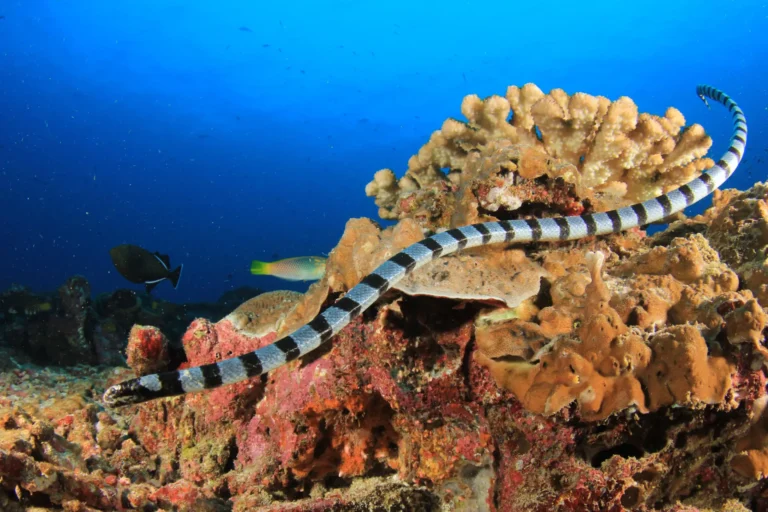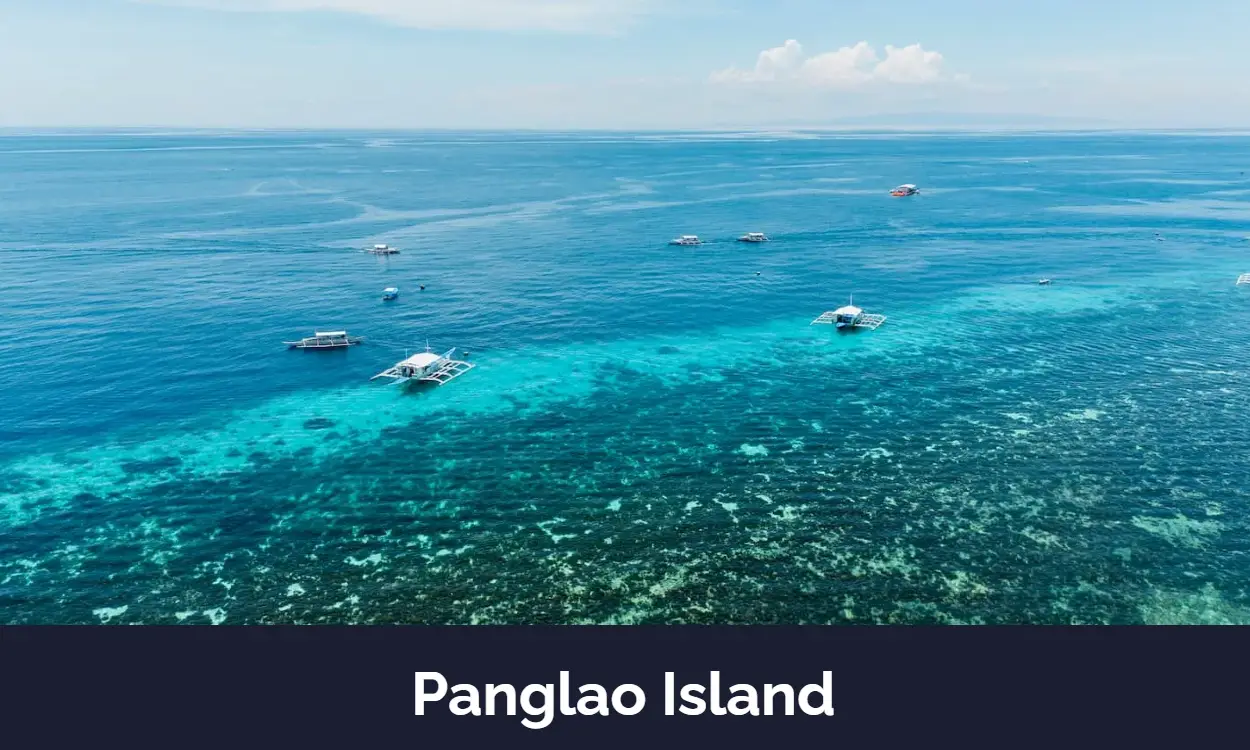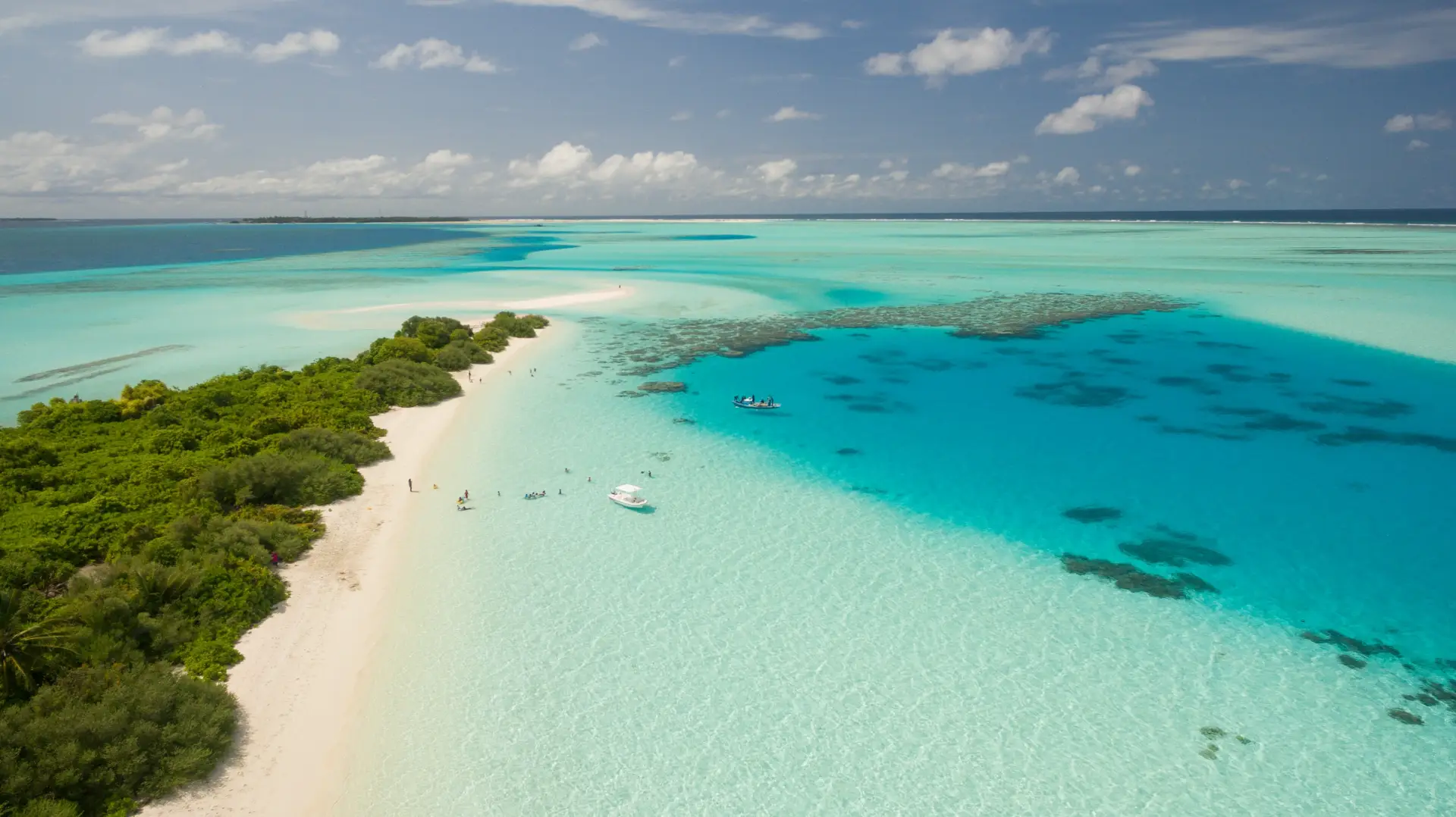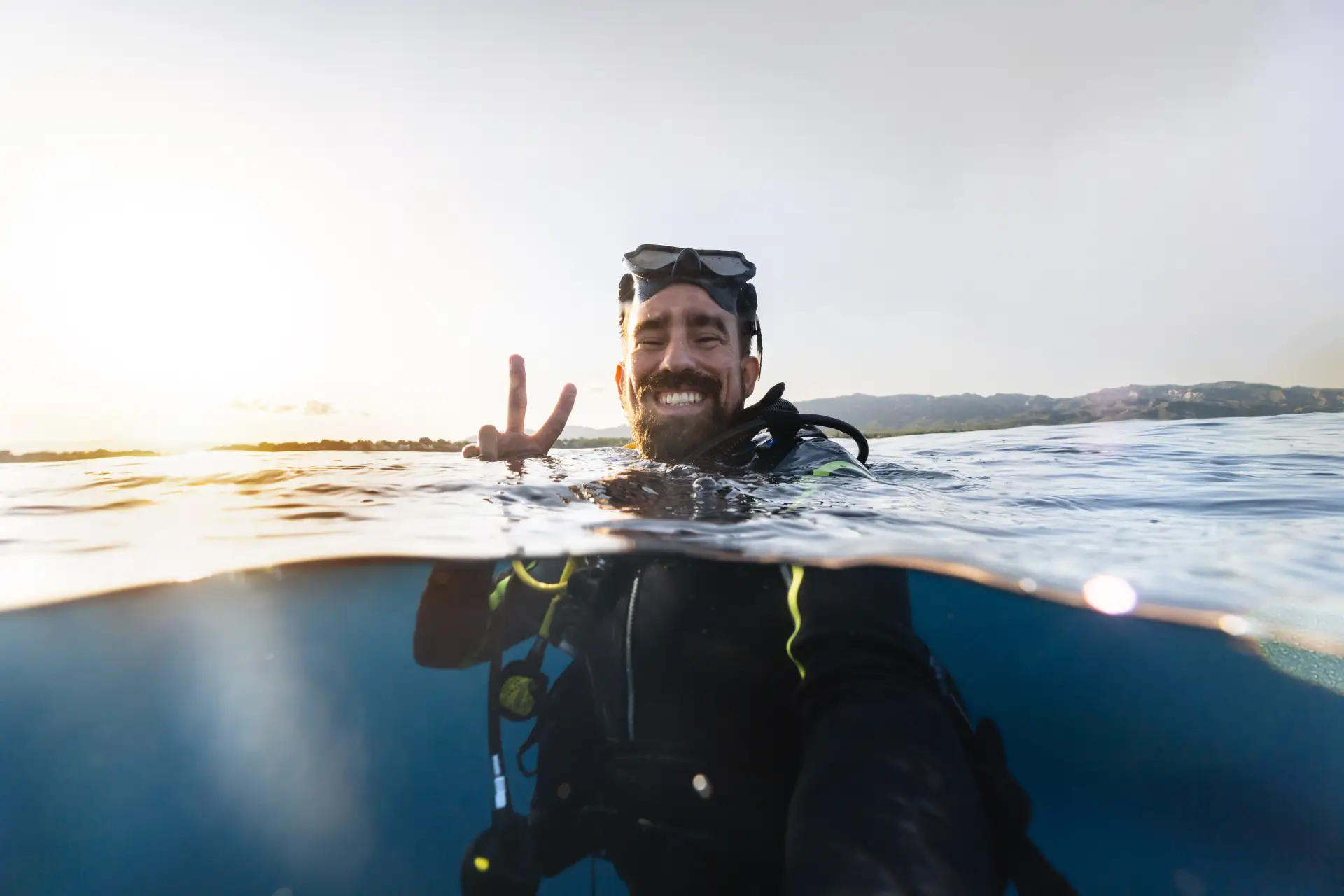The Architects of Paradise: A Diver’s Guide to the Corals of Bohol
When you descend into the warm, blue embrace of Bohol’s waters, your senses are immediately flooded with life. A turtle glides past, a school of jacks shimmers in the distance, a tiny clownfish peeks from its anemone home. But what about the city they all live in? The sprawling, intricate, vibrant structure that forms the very foundation of this entire ecosystem?
We’re talking about the coral itself.
Too often, we see the reef as a beautiful backdrop. But the coral is the star of the show. It is not a plant or a rock; it is a massive colony of tiny, living animals that have built a paradise with their own bodies. At Sierra Madre Divers, we believe that learning to recognize and appreciate these incredible architects will transform your dive from a simple sightseeing trip into a conversation with a living, breathing world.
The Living Foundation: What Exactly is Coral?
Before we explore the different types, let’s start with the basics. A coral reef is a colony made up of thousands to millions of individual animals called polyps. Each polyp is a tiny, soft-bodied creature, closely related to sea anemones and jellyfish.
Coral is generally divided into two main groups:
- Hard Corals (Scleractinia): These are the reef-builders. Each polyp secretes a hard, limestone (calcium carbonate) skeleton. Over thousands of years, the skeletons of the colony fuse together to create the massive, complex structures that form the foundation of the reef. They get most of their food and their vibrant colour from a crucial symbiotic partner: tiny algae called zooxanthellae that live within their tissues.
- Soft Corals (Alcyonacea): These are the garden-dwellers. They do not form a massive, unified skeleton. Instead, their tissues are supported by tiny, spiny skeletal elements called sclerites, which give them structure and a sometimes-spiky texture. They are often flexible, swaying gracefully in the current to feed on passing plankton.
The waters of Bohol, located in the heart of the Coral Triangle, boast an astounding diversity of both. Let’s meet some of the key architects and artists of our local reefs.
The Architects of Paradise – Bohol’s Hard Corals
These are the builders, creating the apartments, highways, and skyscrapers of the reef city.
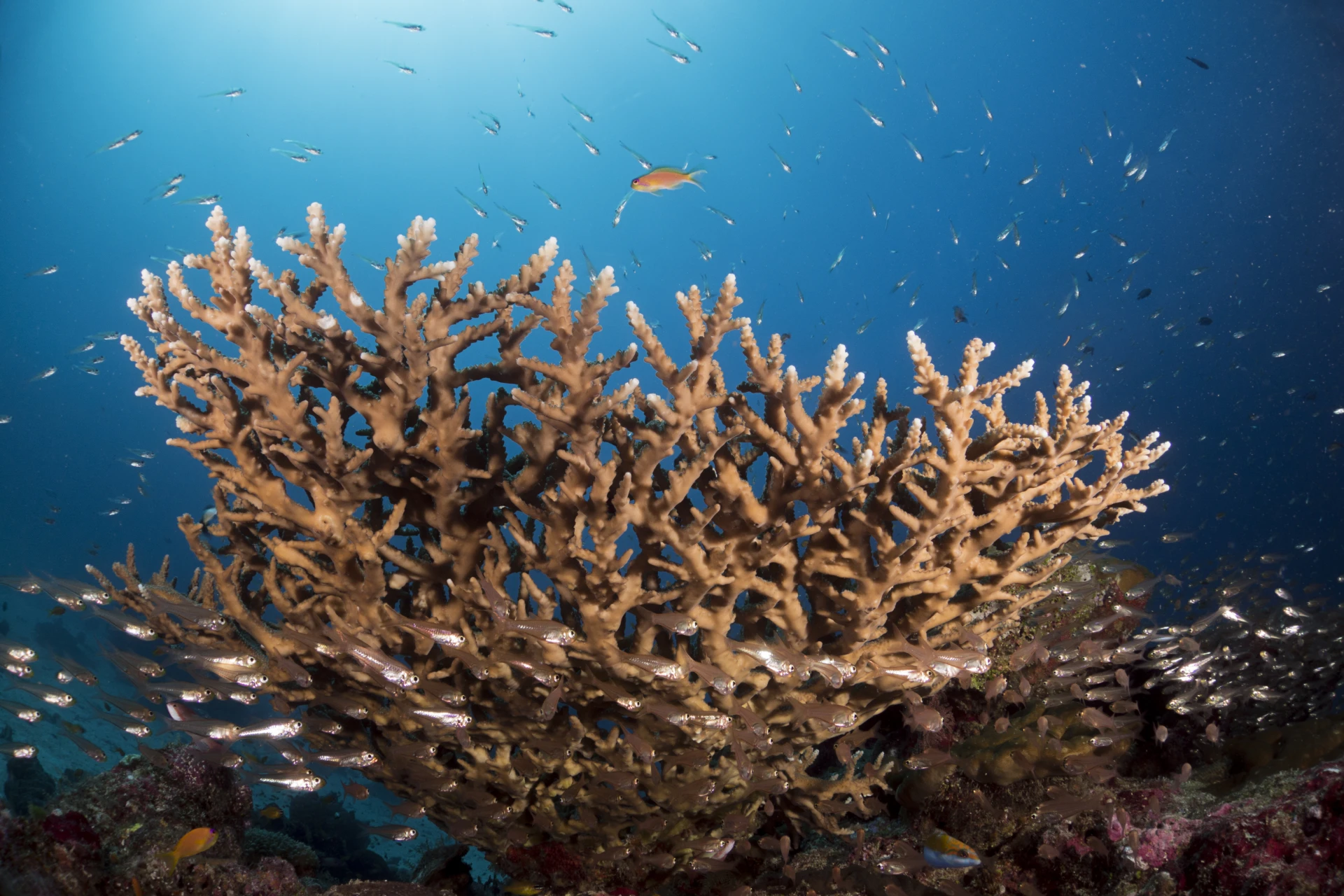
The Sprawling Forests: Branching & Table Corals (Acropora)
Acropora corals are the undisputed kings of reef-building. They grow quickly and form vast, complex structures. You’ll see them as dense, thicket-like Staghorn Corals or as magnificent, flat Table Corals, which can grow to be several meters wide. These intricate branches provide the perfect nursery for juvenile reef fish, offering countless nooks and crannies to hide from predators. A healthy Acropora forest is a sign of a thriving reef, though they are very fragile and can be easily damaged by careless fins or anchors.
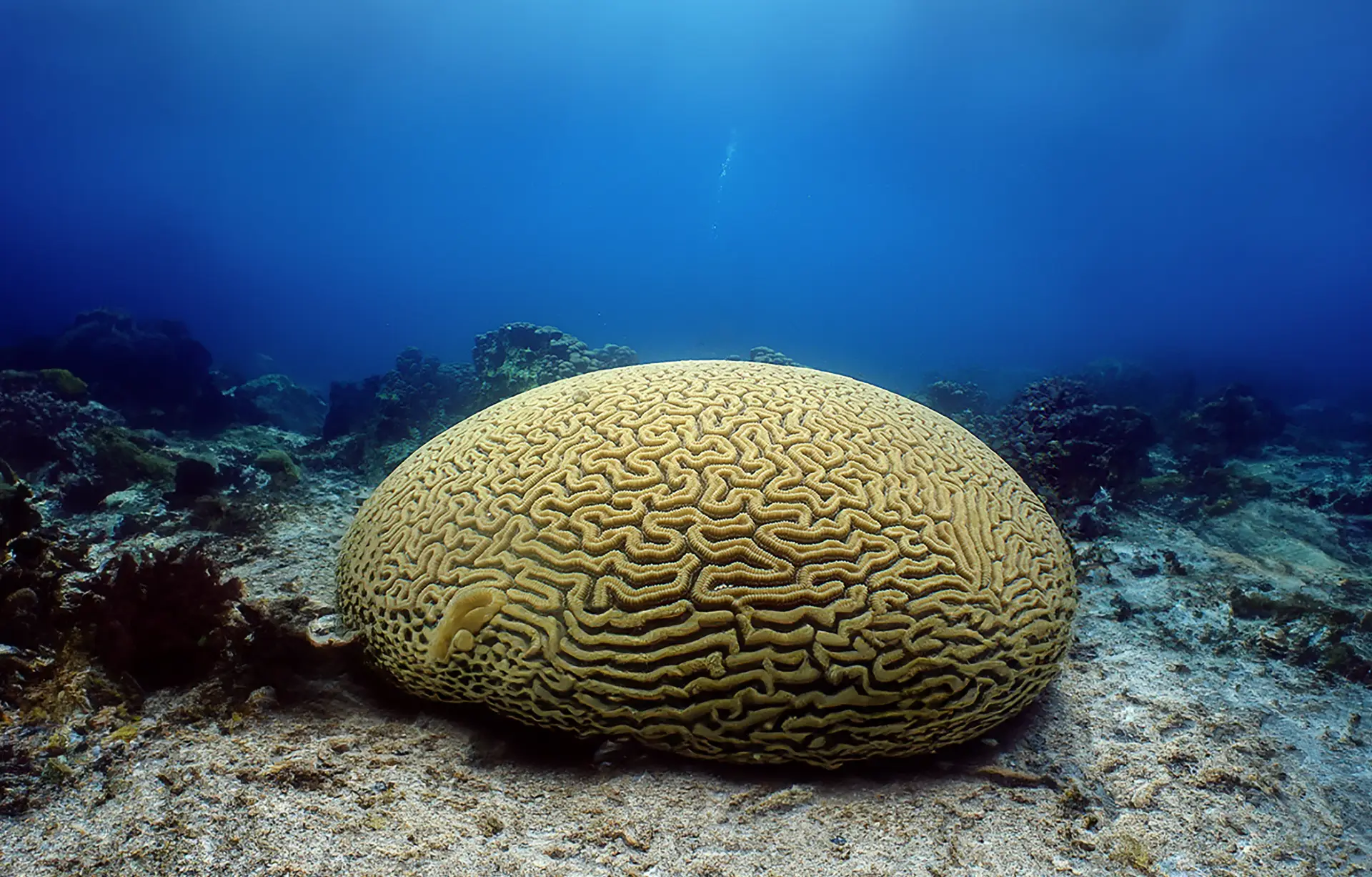
The Ancient Boulders: Massive & Brain Corals
In contrast to the fast-growing Acropora, massive corals like Boulder Corals (Porites) and Brain Corals (Platygyra) are the slow, steady elders of the reef. They grow just millimeters a year and can live for hundreds of years. Their huge, solid forms act as the bedrock of the ecosystem, providing stability and a solid foundation. Look for their intricate, maze-like patterns that give brain coral its name, or the smooth surfaces of boulder corals that can form structures the size of a small car.
The Shaded Canopies: Plating Corals
As you drift deeper along a reef wall, you’ll notice corals that grow in wide, flat, overlapping plates or shelves. These are often Plating Corals (Montipora), and their shape is a brilliant adaptation to low-light conditions. By growing horizontally, they maximize their surface area to capture every possible ray of sunlight for their symbiotic algae. These elegant structures create beautiful, shaded canopies that provide shelter for fish and other invertebrates.
The Vibrant Gardens – Bohol’s Soft Corals
If hard corals are the architects, soft corals are the artists, painting the reef with colour and texture.
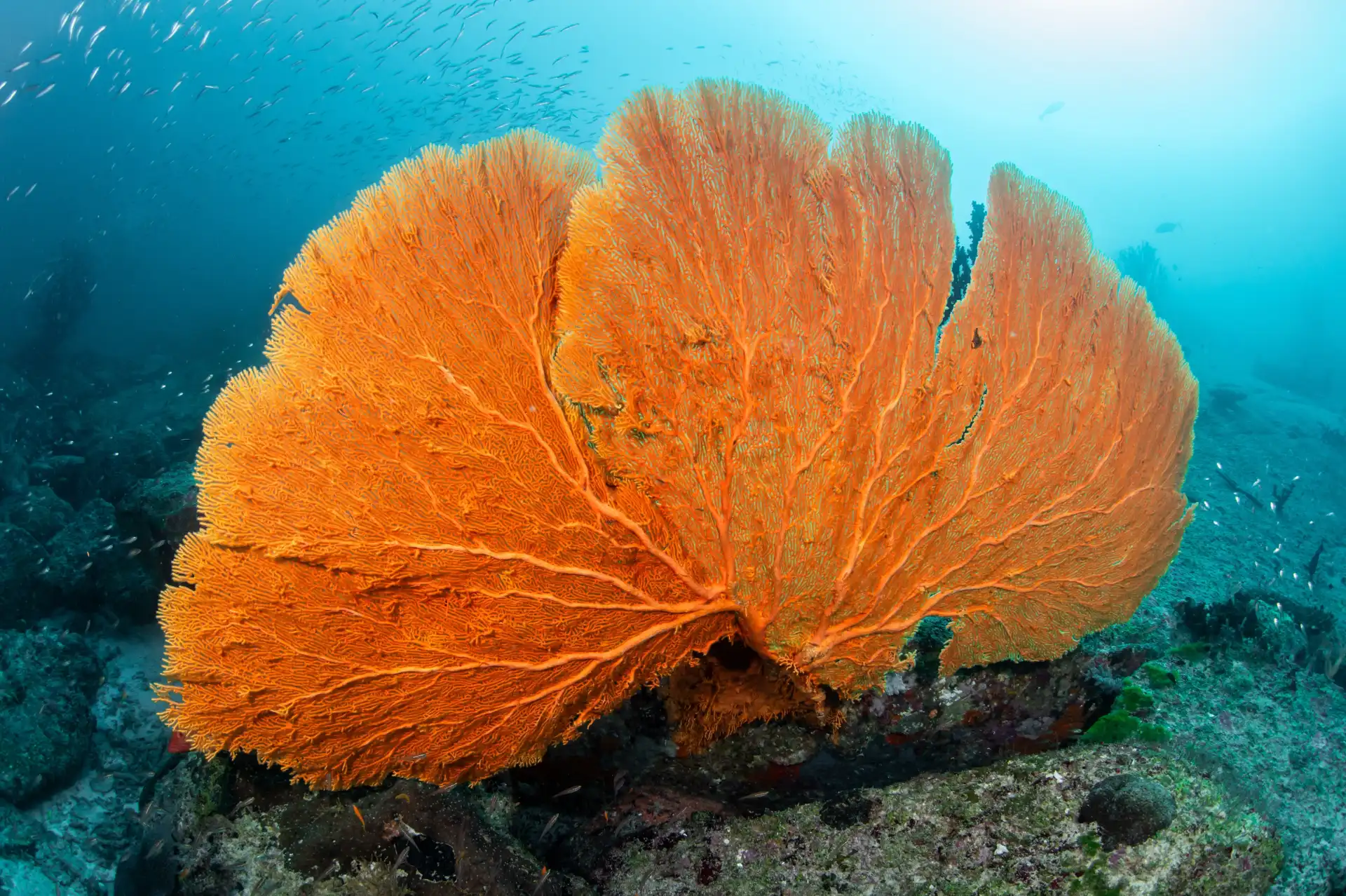
The Intricate Filters: Gorgonian Sea Fans
One of the most iconic sights on any healthy reef wall is a giant Gorgonian Sea Fan. These beautiful, intricate structures are not one single organism, but a colony of polyps that have grown into a flat, lattice-like fan. They always orient themselves perpendicular to the prevailing current to create the perfect net for catching passing plankton. The walls of Balicasag are famous for their stunning sea fans. Pro tip: look closely at their branches for one of the ocean’s best-camouflaged critters, the tiny pygmy seahorse!
The Jewel-Toned Trees: Carnation Corals (Dendronephthya)
In caves, under overhangs, and in current-rich areas, you’ll find breathtaking bunches of pink, purple, orange, and yellow. These are often Carnation Corals, also known as tree corals. Unlike most corals, they do not have symbiotic zooxanthellae. This means they get no energy from the sun and rely entirely on filter-feeding. Their spectacular, jewel-toned colours are from their own natural pigments, making them one of the most vibrant and beautiful sights on the reef.
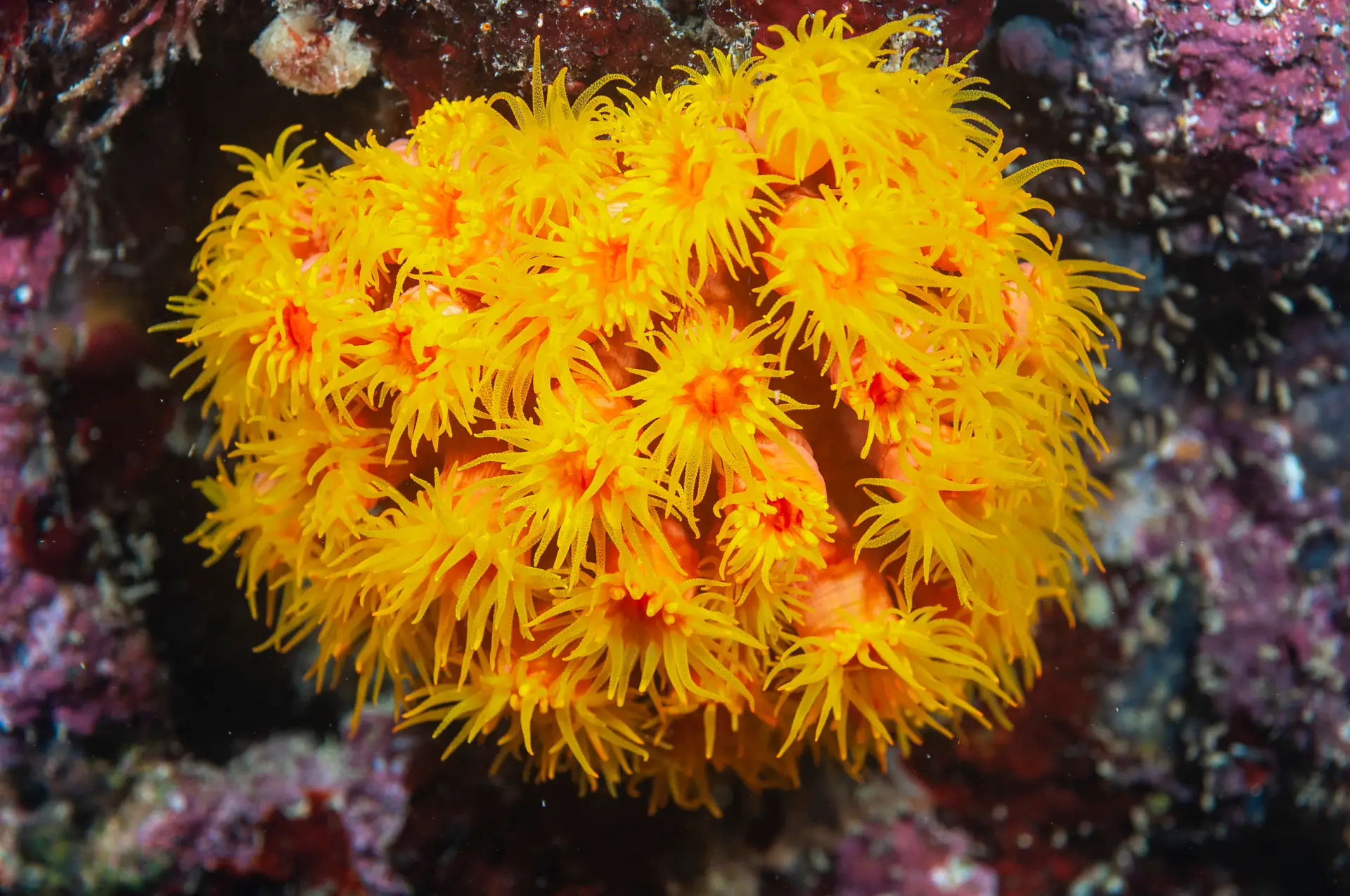
The Stars of the Night Dive: Sun Corals (Tubastraea)
During the day, Sun Corals look like clusters of unassuming orange or yellow buds. But on a night dive, they undergo a spectacular transformation. As darkness falls, their large, translucent polyps emerge to feed, turning the cluster into a brilliant, star-like bloom. Witnessing a wall covered in feeding sun corals under the beam of your torch is a core memory for any night diver.
How to Be a Reef-Friendly Diver
This incredible, living city is fragile. As visitors, we have a responsibility to protect it.
- Perfect Your Buoyancy: The single most important skill. Stay neutral, keep your fins up, and never touch, stand on, or crash into the coral.
- Secure Your Gear: Make sure your octopus regulator and gauges are clipped securely to your BCD and not dragging across the reef.
- Use Reef-Safe Sunscreen: Chemicals in regular sunscreen are toxic to corals. Please choose a mineral-based option.
- Look, Don’t Touch: Never break off a piece of coral, no matter how small. It is a living animal.
The next time you dive in Bohol, take a moment to truly appreciate the city itself. Notice the different shapes, textures, and colours of the architects of this paradise. You’re not just a visitor; you’re a guest in a magnificent home built by some of the most industrious and important animals on Earth.
Ready to explore these magnificent coral cities? Join us at Sierra Madre Divers, and let our guides show you the intricate beauty of our underwater world.



